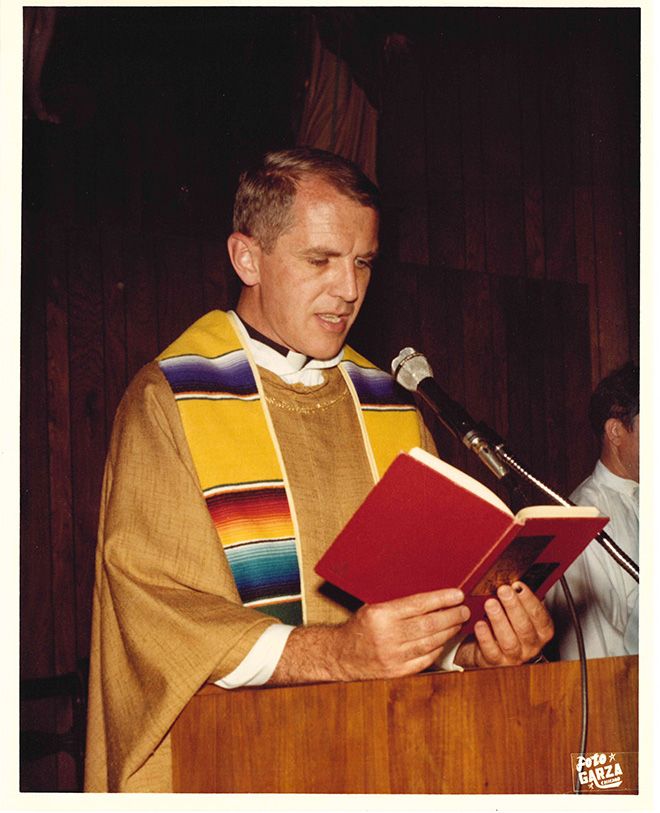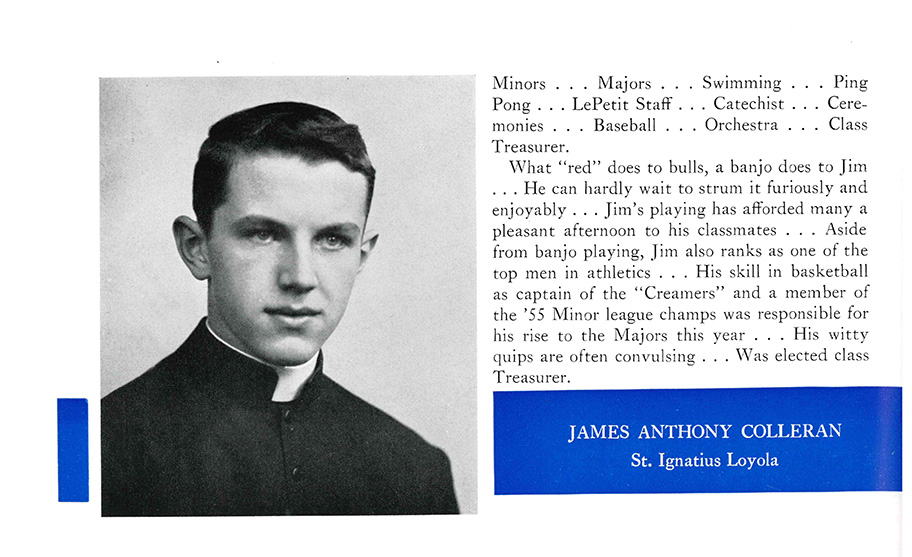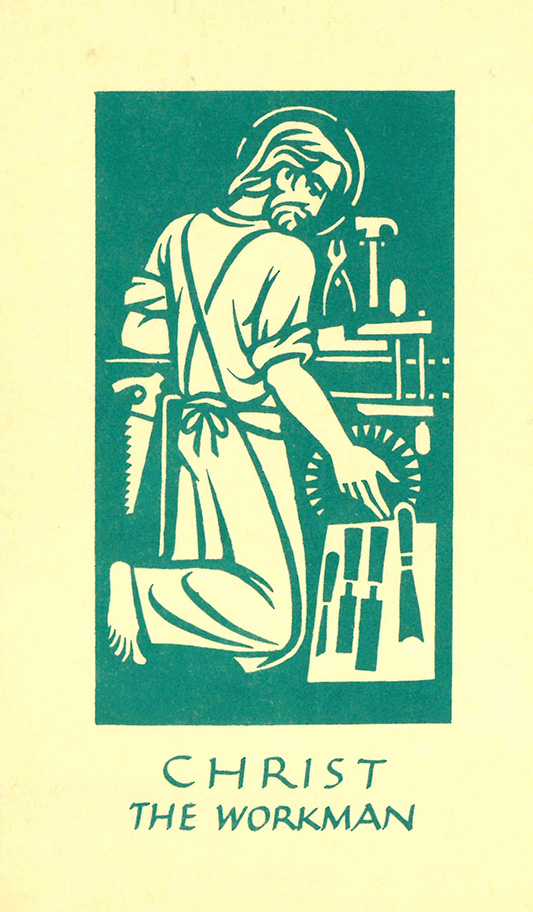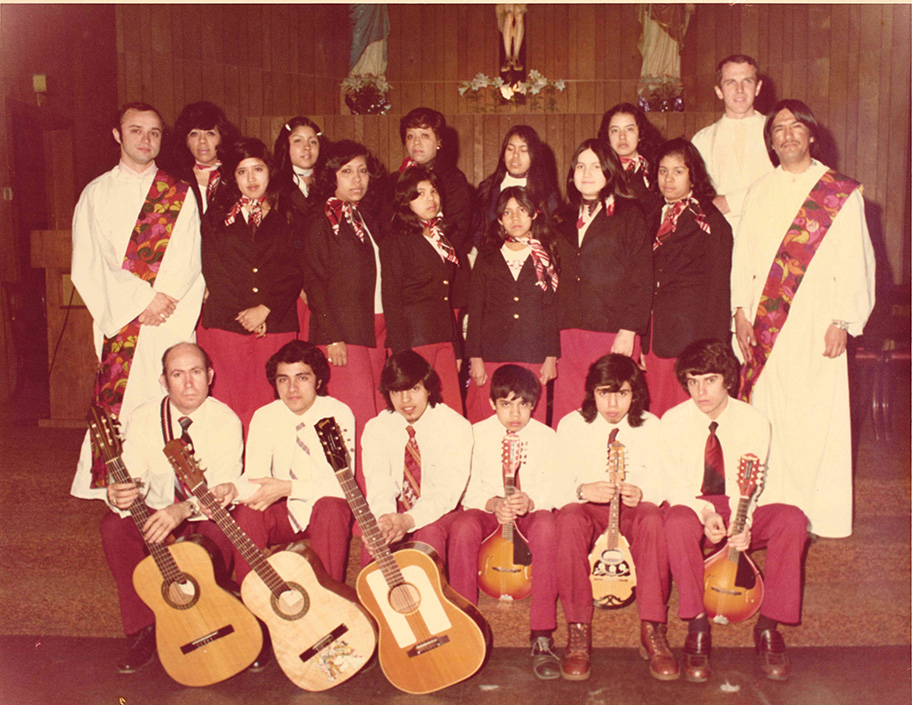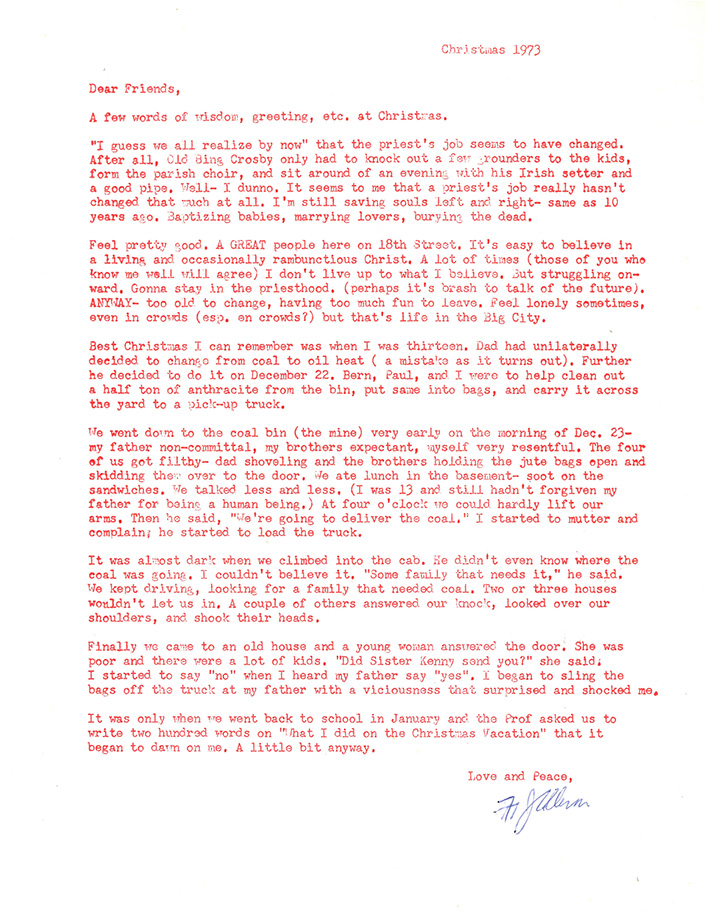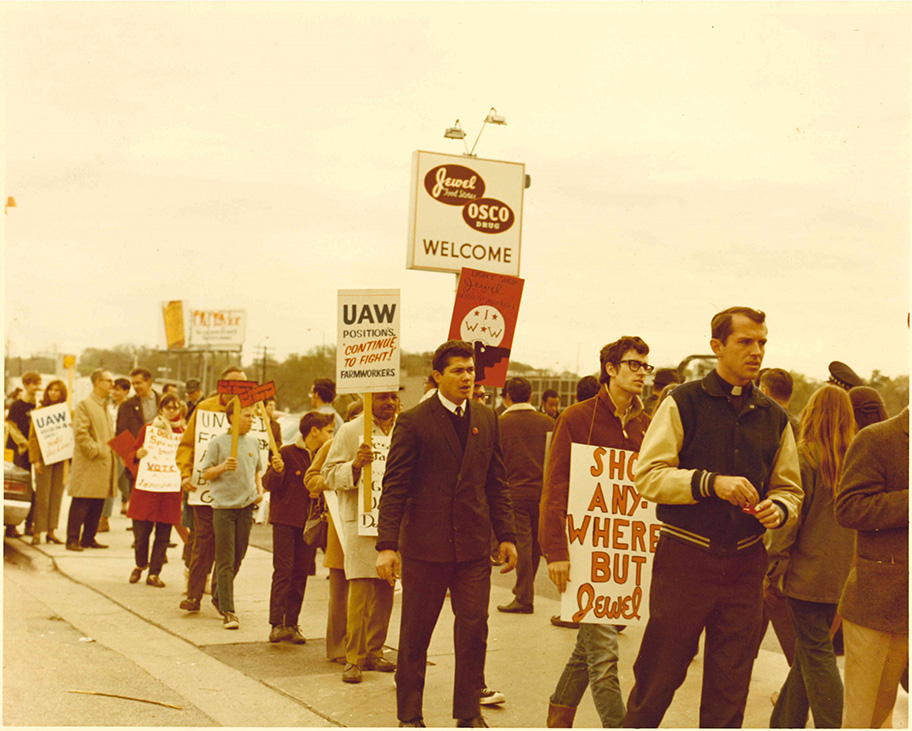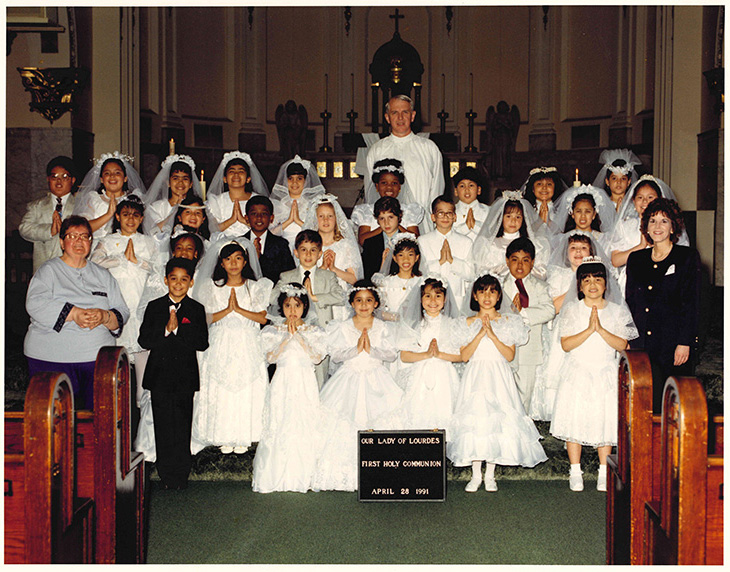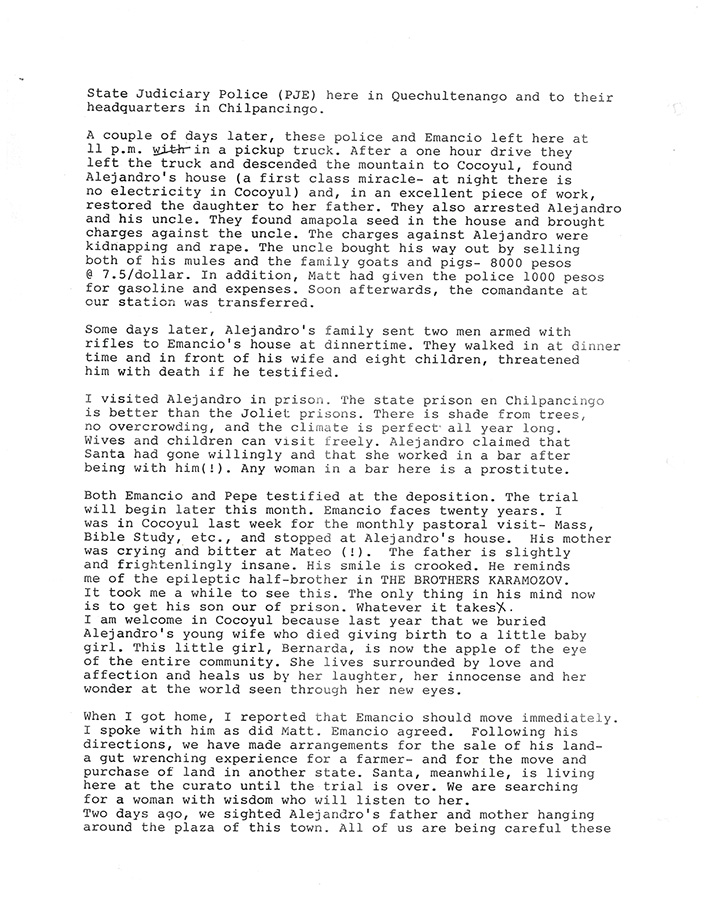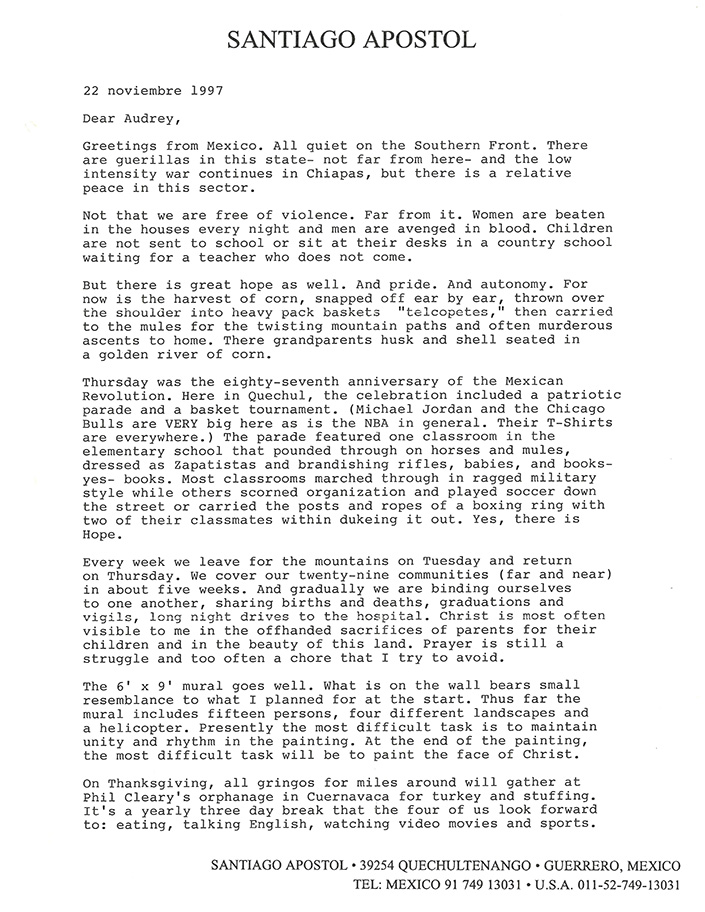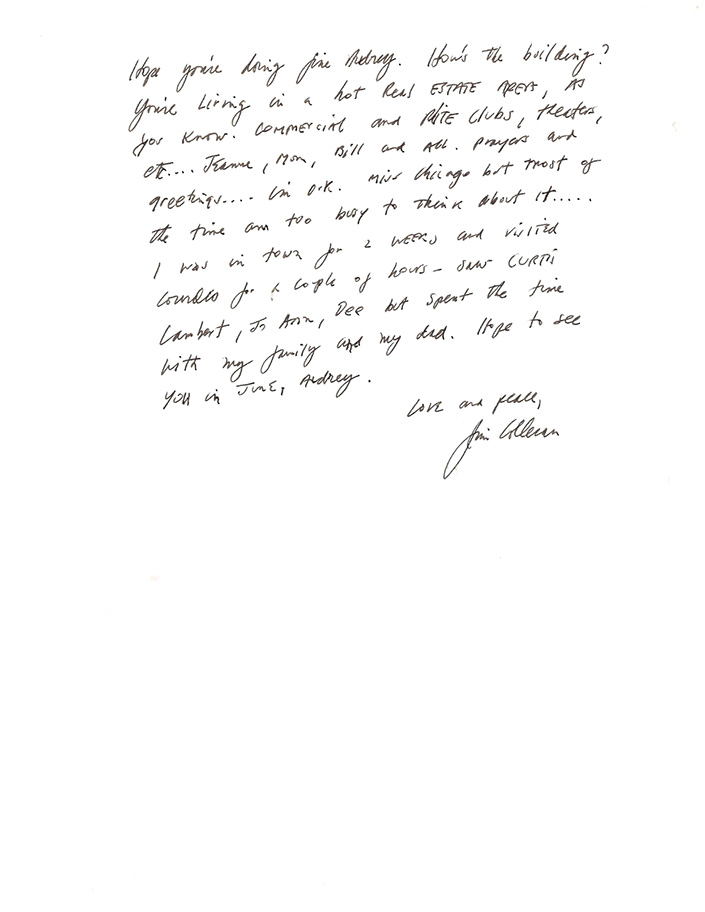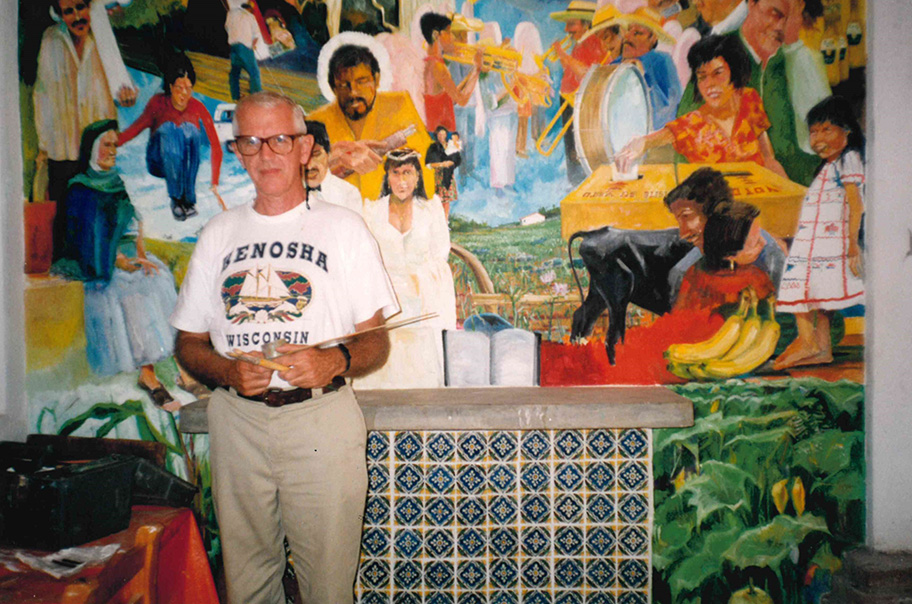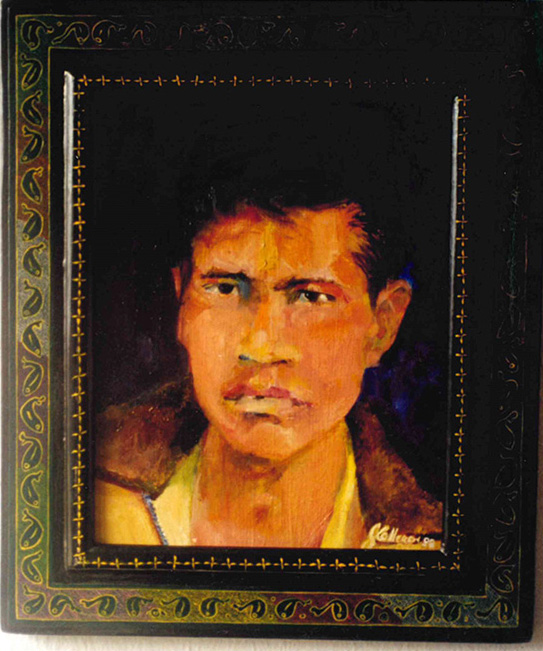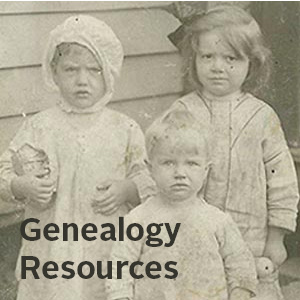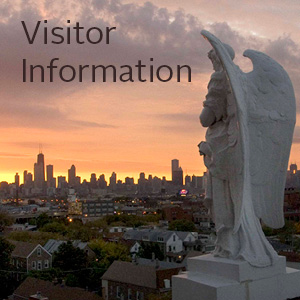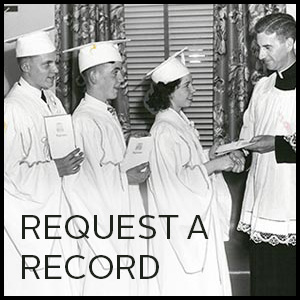Fr. James Colleran
Introduction
A priest is an ordinary man called to live an extraordinary life.
He can be many things: a teacher, a counselor, a leader, an evangelist… But he is sent, at a particular time and place, to use his talents to minister to the needs of God’s people. No matter the times or customs of his age, any priest worthy of his name will strive to bring the grace of God to his flock—through the sacraments, through ministry, and through prayer.
At the Joseph Cardinal Bernardin Archives and Records Center, we want to share some of the stories of local archdiocesan priests with you. We can do this because a few priests preserved their personal papers and donated them to the Archives.
We also want to encourage more diocesan priests to save their papers, photographs, and ephemera and consider giving them to the Archives. That way, their remarkable stories, their formation and ministry, can continue to inspire in the Archdiocese of Chicago and beyond.
This is one story among many. It is about the priesthood of Fr. James Colleran (1937 – 2018), a lifelong Chicagoan with a passion for social justice. This exhibit has been constructed from the papers, letters, and photographs that Fr. Jim, while still alive, donated to the Archives.
Early Years and Formation
James Anthony Colleran was born November 7, 1937 at 6500 N. Bosworth in Rogers Park. He was baptized and grew up at St. Ignatius Loyola Church. Jim was one of five children (four brothers, one sister) born to Bernard and Elizabeth Colleran.
Bernard was born in County Sligo, Ireland and fought in the Irish War of Independence (1919 – 1921). Afterward he moved to America. In the 1950s, Bernie worked for the Labor Department, traveling the country to expose dangerous labor abuses by companies, some of whom did not even pay their workers money, but company “scrip.” He went to mass daily. Bernie’s steadfast faith and solidarity left an indelible mark on Jim.
“[It was my father]... more than anyone else in my life… who could say with St. Paul—though he’d never dream of doing so—‘I handed on to you what I myself received: Christ’” (1 Corinthians 15:3).
Fr. James Colleran, Our Lady of Lourdes Installation Sermon, 1989

Dad + Jim, Xmas ‘66, 1966
Feeling a call to the priesthood, James went to Quigley Preparatory Seminary and graduated in 1956. Pictured here are his photos from Quigley’s yearbook, Le Petit Seminaire. Le Petit Seminaire is French for “the minor Seminary”—a term used for high-school seminaries like Quigley (versus “the major Seminary”—Mundelein).
Jim Colleran went afterwards to Mundelein. He later recounted in one of his sermons how his mother Elizabeth would show him his suitcase and jacket whenever she visited—in case Jim ever decided to leave Mundelein.
Fr. Jim Colleran was ordained on May 1, 1963. His first mass was celebrated at St. Ignatius Loyola alongside his uncle, Fr. James Canon Colleran, and his cousin Patrick Colleran, a deacon. His baseball coach Fr. Tom Connery, S.J. gave the sermon.
“At the seminary, a Spiritual Director, Fr. Krost, asked me, ‘Why do you want to be a priest?’ God help me, I answered, ‘To save souls.’”
-Fr. James Colleran, Retirement Sermon, June 10, 2007
Encounters with Social Justice
At Mundelein Jim maintained an abiding interest in social justice and the intersection of theology and labor. After Mundelein he furthered his education at the Institute of Industrial Relations (ISIR), a Loyola University program created to study labor and build trust between employee and employer. Some of Jim’s papers from seminary and ISIR—like a paper titled “Philosophy of Work” and research into the farm worker unions—underscored an abiding concern for the under-privileged.
While in seminary, Colleran traveled to New York in 1962 to research the Catholic Worker movement started by Dorothy Day (1897 – 1980). While there, he decided to try and meet her. To Colleran, Day “was perhaps the greatest Christian Catholic our nation has produced.” Jim was inspired by Day’s work in which caring for the poor and unwanted was suffused with Catholic social teaching. That meeting, and events surrounding it, were detailed in the booklet pictured below.
Colleran finally found Day at a dingy New York restaurant. She spoke of her time in Illinois, and the path that led her from atheism to conversion and her work providing for the poor. In his 1963 paper, Jim remarked: “she talked easily. Her manner was surfeited with placidness, the product, I think, of years lived according to the fullest demands of one’s vocation.”
“Men go to the seminary for a lot of reasons. But the overriding one—at least on our part—goes something like this. A man looks at the world. And then he looks at Christ. Then he says, the world needs Christ very badly. He does this many times—over the years. Finally, he says, I think the best way I can bring Christ to the world is to be a priest.”
- James Colleran, A Voice from the Far Left: the Catholic Worker, 1963
Fr. James Colleran’s Pastoral Ministry – A Selection
While no collection of papers can ever fully capture the life of a person, this selection displays some of the remarkable pastoral work by Fr. Colleran and the circumstances he found himself in.
Fr. Jim was first assigned to St. Bonaventure in 1963 in Lake View. Colleran believed in being active in his neighborhood. He was a youth chaplain, wrote to local newspapers (like West Lakeview’s Neighborhood News), and took part in pro-life and pro-labor demonstrations.
In 1969, John Cardinal Cody, the archbishop of Chicago (pictured below, right), sent Fr. Colleran (left) and eight other priests to Puerto Rico and gain fluency in Spanish to serve the city’s Latino Catholics. Hispanics were roughly 20% of the city’s population, but there were few Spanish-speaking priests.
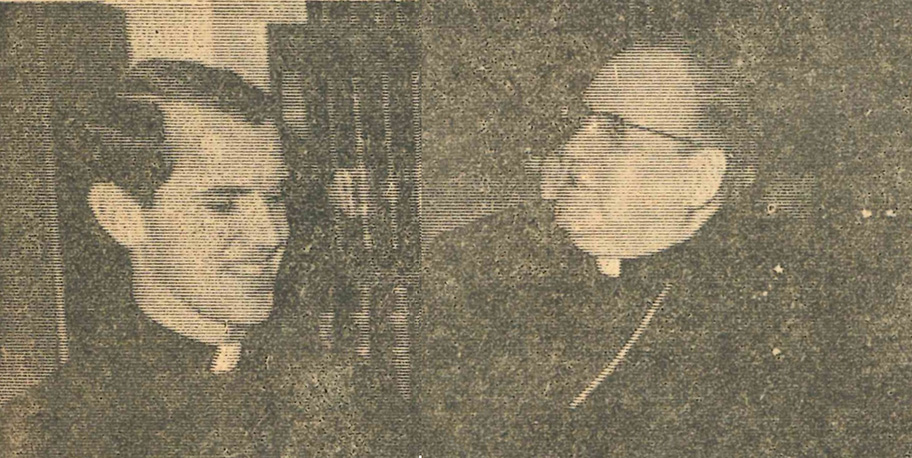
“El Cardenal Cody Envia Sacerdotes a Estudiar a A. Latina.” La Prensa Libre de Chicago, January 6, 1969 (“Cardinal Cody Sends Priests to Study in Latin America”)
The writing above is an example of Fr. Colleran’s homiletic style. Jim preached in a way that was warm and relatable, drawing moral lessons from his life and the everyday. The Bing Crosby movie he references here is Going My Way (1944), in which a young priest’s upbeat and youthful style (and singing) transforms an inner-city parish.
Hardship and Solidarity – Hispanic Outreach in Pilsen
Fr. Jim worked alongside several other priests from five parishes in Pilsen. Situated in a poor immigrant neighborhood, this group (dubbed “the 18th Street Team”) worked hard to gain the trust needed to be effective spiritual shepherds.
One way to gain trust was by helping his parishioners advocate for better working and living conditions in Pilsen. At St. Vitus, Fr. Colleran, along with Pablo Torres and Saul Medina, founded the Asociación pro Derechos Obreros, (Association for Workers’ Rights), a labor activist group committed to increasing Latino representation in the workforce. The group headquartered at St. Vitus. The A.P.O. blockaded CTA buses in 1972 to force the city to hire more Spanish-speaking bus drivers.
The church bulletin was also used to organize parishioners at St. Vitus. The bulletin listed A.P.O. activities, community awareness events, and more. In the bulletin below, a special announcement was made to organize against Jewel for selling produce harvested by non-union farmhands.
Tragedy struck Pilsen in 1976. On Christmas Eve, a grease fire broke out in one of the tenement buildings while a children’s birthday party was underway. The fire quickly engulfed the entire building. To make matters worse, the firefighters could not speak Spanish in the heavily Latino neighborhood—they could not give directions to panicking tenants amidst the hysteria. Not two blocks from the church, ten children and two adults had died. It was a grim Christmas at St. Vitus. Fr. Colleran presided over the funeral.

18th Street Fire Victims Funeral Card, 1976
Before the year was over, another fire close to St. Vitus claimed more lives. City officials blamed the residents, saying their own neglect caused the fires. Outrage over unsafe housing, absentee landlords, and construction law loopholes soon crystallized into a desire for action. Fr. Jim Colleran joined with the 18th Street Team and other parishioners to organize a public Via Crucis (Way of the Cross) procession for Good Friday in 1977.
It is estimated that 2,000 – 3,000 people participated, starting from Providence of God Church on 18th Street and ending by St. Pius V. This photo captures the Via Crucis near what is likely 18th and Carpenter.
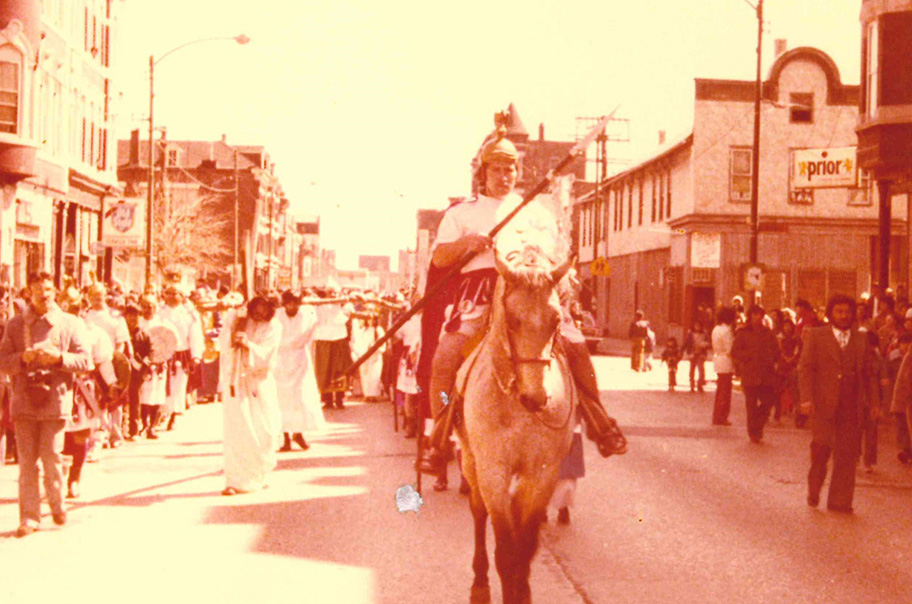
Via Crucis in Pilsen, undated
The demonstration presented a deep spiritual response to a community’s crisis and a desire to wed their faith with a call to action.
Good Friday — a wintery wind chill factor of 15 degrees failed to ward off over three thousand people who participated in the “Via Crucis”[.] … As the “act of faith” flowed out into the streets the police became helpless in controlling traffic. … Behind the costumed cast of about 60 came a motley multitude singing, praying, or marching along out of curiosity. Along the way families leaned out of windows, mechanics emerged from greasy garages and the weather-worn but wisened [sic] elderly stood in silence as the children scampered everywhere to get a view—three hours work 30 catechism classes. The prayers and commentary at the different stations ranged from traditional hymns for Our Lady of Sorrows… to a critical commentary on the crucifixion of Christ poor through unjust living conditions (while pausing for an “Our Father” in front of the burned out buildings of the Christmas fires). The drama of the crucifixion… focused public attention on a central event of the Christian faith… Even as the body was laid away in a now normally empty enormous old church, the word began to spread “Our faith is not dead but living.”
Anonymous first-hand account on the Via Crucis from “Reflecting on a Call to Mission,” 1977
It was the start of a vibrant faith tradition: the yearly Via Crucis in Pilsen is one of most famous Lenten processions in the United States.
Our Lady of Lourdes
In 1989 Fr. Jim became the pastor of Our Lady of Lourdes in Uptown.
Uptown was another neighborhood experiencing a growing Latino population. Our Lady of Lourdes was split between European, Asian, and Hispanic parishioners. In his application for pastor, Fr. Jim noted how it was crucial to maintain unity in the parish. No one wanted to see OLL splinter into isolated ethnic enclaves—or have one group push the others out. Later in life Fr. Colleran was proud of his work helping to sustain three distinct communities united in parish life.
In his installation sermon, Fr. Jim took the listener on a tour of the neighborhood, chronicling its ups and downs—and where one might find Christ both at OLL and beyond.


Installation Sermon at Our Lady of Lourdes, 1989
Fr. Colleran occasionally provided the artwork for OLL’s bulletins. One is pictured below. Jim started taking art classes at age 9 at the Art Institute and cultivated his painting and drawing skills all his life. Note that the bulletin is bilingual.
Fr. Colleran in Mexico
After decades of work as a pastor, it was time for a change. In 1995, Fr. Jim joined a mission team organized jointly by the Archdiocese of Chicago and Diocese of Chilpancingo-Chilapas, Mexico. A small team—three Mexicans, Jim, another Chicago priest Fr. Matt Foley, and two laypersons—would work as missionaries in rural villages of Quechultenango in the state of Guerrero. The hilly terrain sometimes meant that travel was restricted to foot or burro. There were 29 chapels in the parish; the farthest one was a twelve-hour walk away.
They were not the only ones there: the Seventh-Day Adventists and Jehovah’s Witnesses had sent missionaries there. Fr. Jim’s view was equanimous. He wrote to his aunt Audrey in 1995: “We’ll just have to out-organize them, out-visit them, out-love them.”
Missionary work could be challenging and, in some cases, dangerous. Not long after Colleran and his cohorts arrived, the Zapatista revolution broke out in southern Mexico, which provoked a violent government response. Local officials viewed the missionaries with suspicion as potential agitators. Other dangers were more local: alcoholism, domestic violence, and human weakness.
Despite these hardships, Fr. Colleran was nonetheless heartened by the spirit of the people. In a 1999 letter he wrote:
“…the people here are generally very hopeful and hard-working. The newborn are greeted with triumph by women, the children, central, are embraced, the heartaches and triumphs of young people borne and foreshortened with laughter, the dead die in their own beds, ‘en familia’ until the very last. And, like priests everywhere, it is my great privilege and pleasure to be immersed in all of this.”
Fr. James Colleran, Letter to Audrey, 1999
Fr. Jim saved many letters from his time abroad as a missionary. This small selection gives a window into his life in Mexico.
One letter describes an icy meeting between the missionaries and the local government, and an extraordinary and harrowing incident over rescuing a young woman from abduction and kidnapping. Years after the incident, Jim’s brother Bern revealed that Jim convinced the reluctant police by “hinting at certain deficiencies of manhood” among them as well as paying for “expenses.”
Another describes a celebration in a small village despite the civil war and the mural he worked on for one of the local chapels.
Toward the end of his stay in Mexico in 1999, Colleran and his team worked hard to leave the parish in stable condition and cultivate local leadership and spirituality. His experience left him hopeful for the future.
Fr. Jim half-hoped that after his return to Chicago he would be allowed to retire so he could paint exclusively (he noted that Michelangelo did his best work after 60). He was not surprised, however, when he was appointed pastor of St. Mary of the Lake on Sheridan Road in 2000. There he was involved with the school, helped parishioners start up Eucharistic adoration, and continued to paint. He wrote to local newspapers and kept a public profile.
Fr. Jim as Artist
Colleran began taking art classes at age 9. He drew and painted throughout his whole life. His work was featured in calendars, magazines, booklets, and numerous art shows and galleries. Fr. Colleran was also a member of the Covered Bridge Art Association, a collective of landscape painters. He sold and displayed his work around the country.
Jim retired in 2007 after over 50 years of being a parish priest. He would split his time between a farm in Indiana he co-owned with his brother, and a recreational vehicle that allowed him to go on the road.
He wrote to one of his old St. Vitus friends in 2009, reflecting on his life's work:
“Those were our greatest years, Benjamin. At our age, we are clear about our sins but everytime I see a Latino bus driver, … I know we did sometimes respond to God’s Grace and invitation. I’m proud of our victories at the CTA, the HS, and Gray Hound and proud of the effort we gave [even] when we lost…”
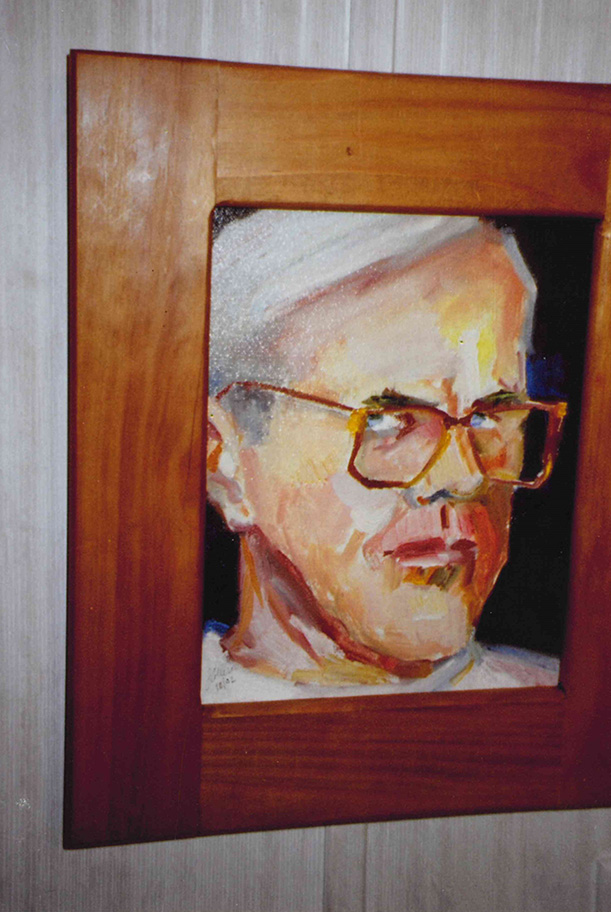
Self-Portrait, 2009
Fr. James Colleran never gave up on the people around him, nor did he ever forget his role in leading people to God. With his papers gifted to the Joseph Cardinal Bernardin Archives and Records Center, we can continue to learn from his example—standing with the marginalized in our society, seeking out God's grace by trusting in Him, taking part of a parish’s everyday life, and not being afraid to speak out against injustice in our midst.
Bibliography
Researched and Written by Charles Heinrich. Charles received his MA in History from Loyola University Chicago in 2015 and is an Archival Technician at the Joseph Cardinal Bernardin Archives and Records Center.
Fr. James Colleran Collection, Written Materials. HIST/H3300/416. Joseph Cardinal Bernadin Archives and Records Center, Archdiocese of Chicago, Chicago, IL.
Fr. James Colleran Collection, Pictorial Materials. HIST/H3300/417. Joseph Cardinal Bernadin Archives and Records Center, Archdiocese of Chicago, Chicago, IL.
St. Vitus – Parish Records – Bulletins. PRSH/P0120/107. Joseph Cardinal Bernadin Archives and Records Center, Archdiocese of Chicago, Chicago, IL.
“A.P.O. Planea una Demonstración Vs. Ofcinas del Correo,” La Raza, April 5, 1975.
“Bernard Colleran; Joined VISTA at 77.” Chicago Tribune, July 9, 1998. https://www.chicagotribune.com/news/ct-xpm-1998-07-09-9807090250-story.html (Accessed December 2018).
“El Cardenal Cody Envia Sacerdotes a Estudiar a A. Latina,” La Prensa Libre de Chicago Chicago, IL, January 6, 1969.
Avila, Oscar. “Priests speak out for illegal workers,” Chicago Tribune, March 1, 2006. https://www.chicagotribune.com/news/ct-xpm-2006-03-01-0603010249-story.html (Accessed November 2018).
Colleran, James. “Some Random Thoughts on Teens,” Neighborhood News, Vol. I, No. 10, March 1967.
Colleran, James. A Voice from the Far Left: the Catholic Worker. New Southwell Press, 1963.
Davalos, Karen Mary. "The Real Way of Praying: The Via Crucis, Mexicano Sacred Space and the Architecture of Domination." Horizons of the Sacred: Mexican traditions in U.S. Catholicism. Ed. Timothy Matovina. Ithaca: Cornell University Press, 2002. 41-68.
DeClue, Denise. “Six Chicago Parishes, Protesting High Cost of Funerals, Refuse Fees.” National Catholic Reporter, November 1976.
O’Donnell, Maureen. “Rev. Jim Colleran, ‘worker-priest’ beloved by Pilsen parishioners, dead at 80,” Chicago Sun Times, July 13, 2018.
https://chicago.suntimes.com/news/jim-colleran-pilsen-catholic-priest-st-vitus-activist-died-obituary-religion-cesar-chavez-rudy-lozano-boycotts/ (Accessed October 2018).
Mora-Torres, Juan. “Pilsen’s First Via Crucis, 1977: Chicago’s Urban Crisis, Faith, and Immigrants.” El BeiSMan (blog). April 14, 2017. http://www.elbeisman.com/article.php?action=read&id=1413 (Accessed November 2018).
Ramirez, Leonard G., Yenelli Flores, Marla Gamboa, Isaura Gonzales, Victoria Perez, Magda Ramiez-Castañeda, Cristina Vital. Chicanas of 18th Street: Narratives of a Movement from Latino Chicago. Urbana, Chicago, and Springfield: University of Illinois Press, 2011.
WTTW. “My Neighborhood Pilsen: Jobs.” WTTW Interactive. https://interactive.wttw.com/my-neighborhood/pilsen/jobs (Accessed November 2018).
